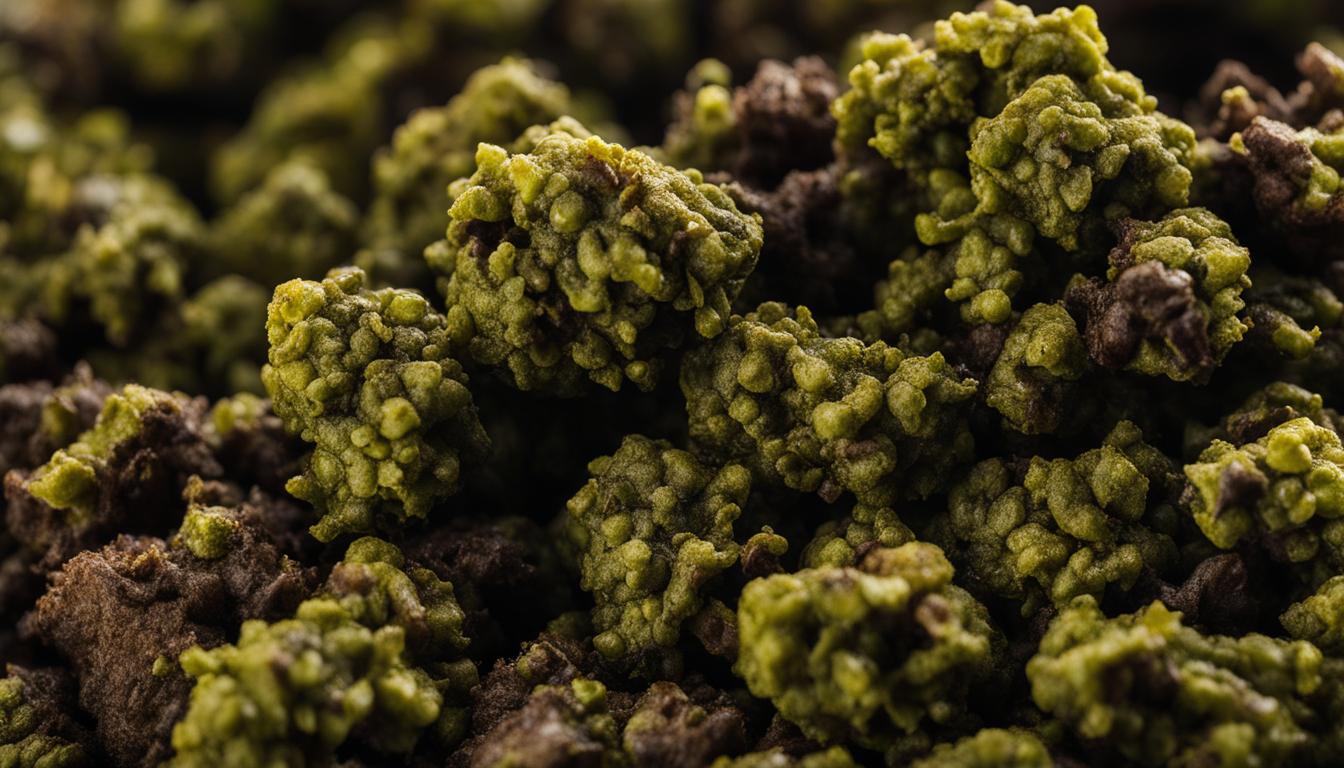Understanding Cat Allergies
Cat allergies can cause various skin issues in our feline companions, leading to discomfort and potential health problems. It’s important for cat owners to understand the triggers and types of cat skin allergies to effectively manage and alleviate their furry friend’s symptoms.
Triggers of Cat Skin Allergies
Cat skin allergies can be triggered by several factors, including:
-
Flea Allergies: Flea bites are a common cause of cat skin allergies. It’s important to note that even indoor cats can be susceptible to fleas. A cat’s allergic reaction occurs in response to the saliva of fleas, leading to intense itching and discomfort (PetMD). Taking preventive measures, such as using effective monthly flea prevention, can help control fleas and reduce itching caused by them.
-
Food Allergies: Some cats may develop allergies to certain ingredients in their food. Protein sources like chicken and fish are common allergens in cats, while corn and wheat are generally not problematic for cats with food allergies. If you suspect a food allergy, consult with your veterinarian to determine suitable dietary changes and management strategies.
-
Environmental Allergies: Cats can also develop allergies to environmental factors, such as pollen, dust mites, or mold. This condition, known as atopic dermatitis, is diagnosed through a process of elimination. Treatment options for environmental allergies may include corticosteroids, immunomodulatory medications like Atopica, or blood testing for allergies to initiate immunotherapy, also known as allergy shots (PetMD).
Types of Cat Skin Allergies
Cat skin allergies can manifest in various forms, causing discomfort and visible symptoms. Common types of cat skin allergies include:
-
Flea Allergies: Flea bites can lead to an allergic reaction in cats, resulting in intense itching, hair loss, scabs, ulcers, and open sores. Frequent scratching or overgrooming are common signs of flea allergies. In some cases, cats may also develop ear infections as a result of their allergic reaction to fleas (PetMD).
-
Food Allergies: Food allergies in cats can cause similar symptoms to other allergies, including itching, hair loss, and skin lesions. However, gastrointestinal signs such as vomiting or diarrhea may also be present. Identifying and eliminating the specific allergen from the cat’s diet is crucial in managing food allergies.
-
Environmental Allergies: Environmental allergies, or atopic dermatitis, can lead to intense itching, redness, and inflammation. Cats may excessively scratch, bite, or lick affected areas, resulting in hair loss and skin damage. Ear infections can also occur as a result of environmental allergies in cats.
By understanding the triggers and types of cat skin allergies, cat owners can work closely with their veterinarians to develop effective management strategies. From itch relief and inflammation control to identifying and addressing the underlying causes of allergies, proactive measures can help improve the well-being and comfort of cats affected by skin allergies.
Flea Allergies in Cats
Flea allergies are a common issue among cats and can cause significant discomfort and skin problems. In this section, we will explore the causes and symptoms of flea allergies in cats, as well as prevention and treatment options.
Causes and Symptoms
Flea allergies in cats are triggered by a reaction to a flea’s saliva, and even indoor cats are susceptible to fleas. It’s important to note that a single fleabite can cause a severe reaction in cats with flea allergies. The saliva of the flea contains allergenic proteins that can lead to intense itching, hair loss, open sores, and scabs on the skin. The constant scratching and biting can further exacerbate the condition, often resulting in a secondary bacterial skin infection known as pyoderma (VCA Canada).
Identifying flea allergies in cats may involve observing certain symptoms, such as:
- Excessive scratching and grooming
- Hair loss, especially around the base of the tail and back
- Redness, inflammation, and the presence of small bumps or papules on the skin
- Open sores and scabs
- Restlessness and irritability
If you suspect that your cat may have flea allergies, it’s important to consult with a veterinarian for an accurate diagnosis and appropriate treatment.
Prevention and Treatment
Preventing fleas is key to managing flea allergies in cats. Regular and effective flea prevention is essential, even for indoor cats. Using monthly flea prevention products can help control fleas and reduce the itching caused by them. Your veterinarian can recommend suitable flea prevention products based on your cat’s individual needs.
In addition to flea prevention, treatment for flea allergies may involve:
- Flea control: Treating the cat’s environment, including bedding, furniture, and carpeting, to eliminate fleas and prevent reinfestation.
- Medication: Your veterinarian may prescribe medications to relieve itching, such as antihistamines or corticosteroids. Additionally, they may recommend topical treatments or oral medications to control fleas and prevent further allergic reactions.
- Skin care: Regular bathing with a gentle, hypoallergenic shampoo can help soothe the skin and remove allergens. However, it’s important to follow your veterinarian’s instructions on bathing frequency and products suitable for your cat’s specific condition.
Remember, effective flea prevention is crucial in managing flea allergies in cats. By addressing the underlying cause and providing proper treatment, you can help alleviate your cat’s discomfort and improve their overall skin health.
For more information on cat allergies and their management, check out our section on cat allergies and explore various treatment options, such as cat allergy medication, cat allergy relief, and cat allergy testing.
Food Allergies in Cats
Food allergies in cats occur when their immune system reacts to a particular food or food additive. It is important to identify and manage these allergies to ensure the well-being of your feline companion. In this section, we will explore common allergens and the diagnosis and management of food allergies in cats.
Common Allergens
When it comes to food allergies in cats, the allergic reaction is most commonly triggered by the protein component of the food. While specific allergens can vary from cat to cat, some common allergens include chicken and fish. It is important to note that corn and wheat are typically not problematic for cats with food allergies (PetMD).
To determine the specific allergen causing the allergic reaction in your cat, a veterinarian may recommend a novel protein diet or a hypoallergenic diet. These specialized diets are designed to eliminate common allergens and provide alternative protein sources that your cat has not been exposed to before. This can help identify the specific protein that triggers the allergic response (PetMD).
Diagnosis and Management
If you suspect that your cat has a food allergy, it is important to consult with a veterinarian for proper diagnosis and management. The veterinarian may perform a thorough physical examination, review your cat’s medical history, and conduct allergy testing if necessary.
To diagnose a food allergy, your veterinarian may recommend an elimination diet. This involves feeding your cat a diet consisting of novel proteins and carbohydrates that your cat has not been exposed to before. If your cat’s symptoms improve during the elimination diet, it suggests a food allergy. Your veterinarian may then reintroduce specific foods one at a time to pinpoint the allergen.
Once the allergen has been identified, the key to managing food allergies in cats is to eliminate the offending ingredient from their diet. This may involve feeding your cat a specialized hypoallergenic diet that is formulated to exclude the specific allergen. It is important to strictly adhere to the recommended diet and avoid any treats or table scraps that contain the allergen.
In some cases, your veterinarian may prescribe medications to alleviate your cat’s symptoms, such as antihistamines or corticosteroids. These medications can help reduce itching and inflammation associated with food allergies. However, it is crucial to consult with your veterinarian before administering any medications to your cat.
By working closely with your veterinarian and following their guidance, you can effectively manage food allergies in your cat. Identifying the specific allergen and providing an appropriate diet is essential for minimizing allergic reactions and ensuring your cat’s overall health and well-being.
Environmental Allergies in Cats
Environmental allergies, also known as atopic dermatitis, can cause significant discomfort for cats. Understanding the basics of environmental allergies, including atopic dermatitis and common allergen sources, can help cat owners better manage their feline companions’ skin allergies.
Atopic Dermatitis Overview
Atopic dermatitis in cats refers to allergic reactions to environmental allergens such as pollens, grasses, molds, mildew, and house dust mites. These allergens can trigger an immune response in sensitive cats, leading to severe generalized itching. It is important to note that atopic dermatitis is a diagnosis of exclusion, meaning that other potential causes of skin allergies should be ruled out before reaching this conclusion.
Common symptoms of atopic dermatitis in cats include:
- Intense itching
- Excessive scratching, licking, or chewing of the skin
- Redness and inflammation of the skin
- Hair loss or thinning
- Skin infections due to scratching and self-trauma
If you suspect your cat may be suffering from atopic dermatitis, it is essential to consult with a veterinarian for proper diagnosis and treatment options.
Allergen Sources and Symptoms
Environmental allergens can come from various sources and may vary depending on the geographic location. Some common allergens that can trigger atopic dermatitis in cats include:
- Pollens from trees, grasses, and weeds
- Mold spores
- Dust mites
- House dust
It’s important to note that characteristics such as the length of a cat’s hair, its sex, and the amount of time spent indoors are not associated with cat allergen levels. Cat allergens, including dander, can remain airborne for at least 30 minutes after being disturbed, leading to constant exposure for allergic individuals. These allergens can also collect easily in upholstered furniture and adhere to clothing.
When a cat with environmental allergies comes into contact with these allergens, they may experience symptoms such as:
- Excessive itching and scratching, especially around the face, neck, and paws
- Redness and inflammation of the skin
- Skin lesions or sores due to constant scratching
- Hair loss or thinning in affected areas
If you suspect that your cat is experiencing environmental allergies, it’s important to consult with a veterinarian. They can help identify the specific allergens causing the allergic reaction through cat allergy testing and provide appropriate treatment options to alleviate your cat’s discomfort.
Understanding the basics of environmental allergies and atopic dermatitis in cats can empower cat owners to take the necessary steps to manage their cats’ skin allergies effectively. By identifying and minimizing exposure to common allergens, cat owners can help their feline companions find relief and improve their overall quality of life.
Managing Cat Skin Allergies
When it comes to managing cat skin allergies, there are two key aspects to focus on: itch relief and inflammation control, as well as identifying and addressing the underlying causes of the allergies.
Itch Relief and Inflammation Control
One of the primary concerns in cat skin allergies is providing relief from the intense itching and reducing inflammation. Itching can lead to frequent scratching or overgrooming, which can further exacerbate the skin issues. To help alleviate itchiness and inflammation, consider the following approaches:
-
Medication: Your veterinarian may prescribe medications such as antihistamines or corticosteroids to help reduce itching and inflammation in your cat. These medications can provide temporary relief, but should always be used under the guidance of a veterinarian. Learn more about cat allergy medication for additional information.
-
Topical Treatments: Topical treatments such as medicated shampoos or sprays can help soothe irritated skin and provide relief from itching. These products often contain ingredients like aloe vera or oatmeal, which have calming properties. Consult your veterinarian for suitable topical treatments for your cat’s specific condition.
-
Bathing: Regular bathing can help remove allergens from your cat’s skin and coat, providing temporary relief. Use a gentle, hypoallergenic shampoo recommended by your veterinarian, as harsh products can further irritate the skin. It’s important to ensure that your cat is comfortable with bathing and to take proper precautions to prevent stress.
Identifying and Addressing Allergy Causes
To effectively manage cat skin allergies, it is crucial to identify and address the underlying causes. Common causes of cat skin allergies include flea bites, food allergies, and environmental allergies. Here are some steps to consider:
-
Flea Control: Flea allergy is one of the most common allergies in cats. Even a single flea bite can trigger a severe allergic reaction, leading to intense itching, hair loss, and secondary bacterial skin infections (VCA Canada). Implementing a comprehensive flea control program for your cat, including regular flea prevention treatments, can help minimize the risk of flea allergies. Consult your veterinarian for suitable flea control options.
-
Dietary Changes: If food allergies are suspected, your veterinarian may recommend an elimination diet to identify the specific allergens. This involves feeding your cat a novel protein source or a hydrolyzed protein diet for a period of time. By gradually reintroducing different ingredients, you can pinpoint the allergen and adjust your cat’s diet accordingly. Learn more about cat allergies symptoms and cat allergies treatment for additional information.
-
Environmental Control: If your cat has environmental allergies, such as atopic dermatitis, minimizing exposure to allergens can be helpful. This may involve reducing indoor allergens, such as dust mites or molds, by maintaining a clean and dust-free environment. Consult your veterinarian for specific recommendations based on your cat’s allergies.
By focusing on itch relief, inflammation control, and identifying the underlying causes of cat skin allergies, you can help improve your cat’s comfort and overall skin health. Always consult with your veterinarian for a proper diagnosis and personalized treatment plan for your cat’s specific condition.
Coping with Cat Allergies
Cat allergies can be a source of discomfort for many cat owners. Understanding the symptoms and available testing and treatment options is essential for effectively coping with these allergies.
Symptoms and Reactions
Cat allergies can manifest in various symptoms and reactions. Some common symptoms include itching, red eyes, runny nose, sneezing, and coughing. Allergic individuals may also experience skin rashes, hives, or difficulty breathing, particularly if they have asthma (Healthline). It’s important to note that cat allergens can come from a cat’s dander (dead skin), fur, saliva, and urine. If you suspect that you or someone in your household is experiencing cat allergies, it’s advisable to consult with a healthcare professional for proper diagnosis and guidance.
Testing and Treatment Options
To determine if you have a cat allergy, there are two common testing methods: skin testing and blood tests. Skin testing, conducted by an allergist, involves pricking the skin with small amounts of cat allergens and observing the reaction. This provides fast results and helps identify specific allergens. Blood tests are an alternative when skin testing is not feasible and can measure the levels of specific antibodies in the blood related to cat allergies.
Once diagnosed, there are several treatment options available to manage cat allergies. Medications such as antihistamines can help alleviate symptoms like itching and sneezing. Nasal sprays and eye drops may also provide relief from nasal congestion and itchy eyes. In more severe cases, allergists might recommend allergy shots (immunotherapy) to desensitize the body’s immune response to cat allergens. These shots are administered over time and gradually reduce the allergic reaction.
In addition to medication, it’s important to take steps to reduce exposure to cat allergens. Regularly cleaning your home, vacuuming with a HEPA filter, and using allergen-proof bedding can help minimize allergen levels. Keeping cats out of certain areas of the home, particularly bedrooms, can also be beneficial. Exploring the possibility of hypoallergenic cats, which produce fewer allergens, may be an option for some individuals.
Coping with cat allergies involves a combination of symptom management, reducing exposure to allergens, and, in some cases, considering alternative pet options. By working closely with healthcare professionals and following their guidance, individuals with cat allergies can find strategies to effectively cope with their symptoms and continue to enjoy the companionship of their feline friends.







